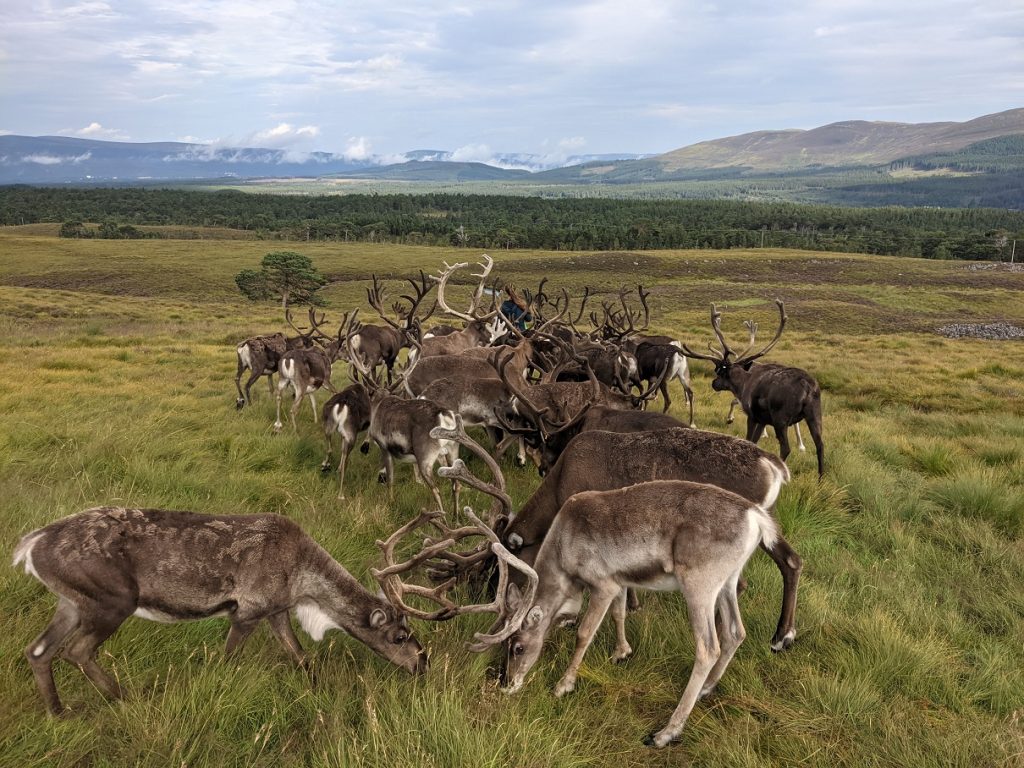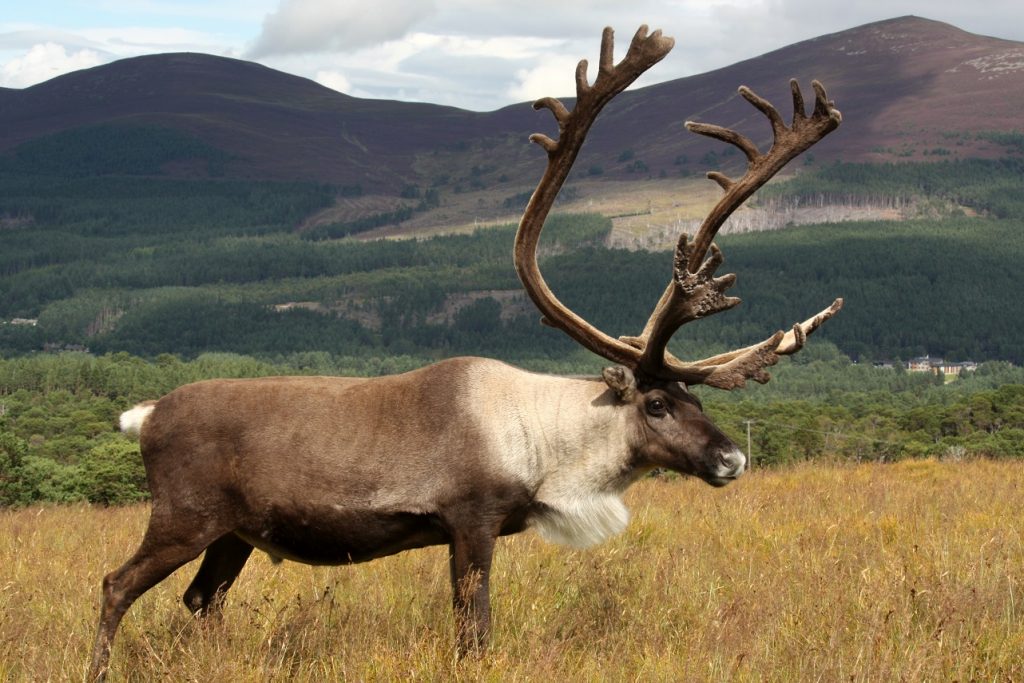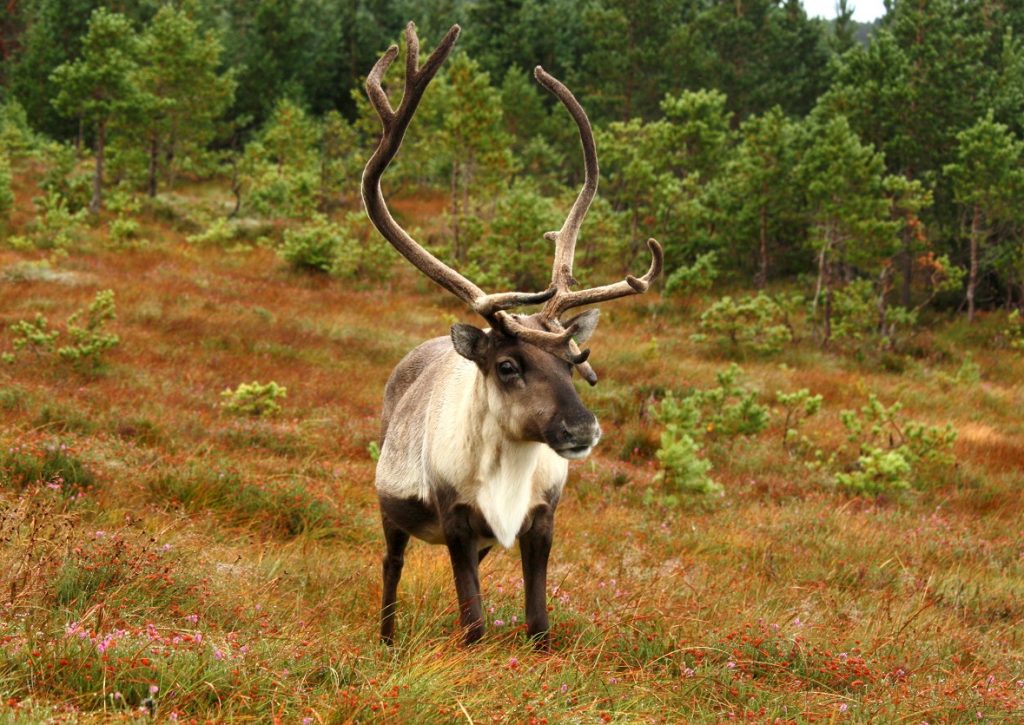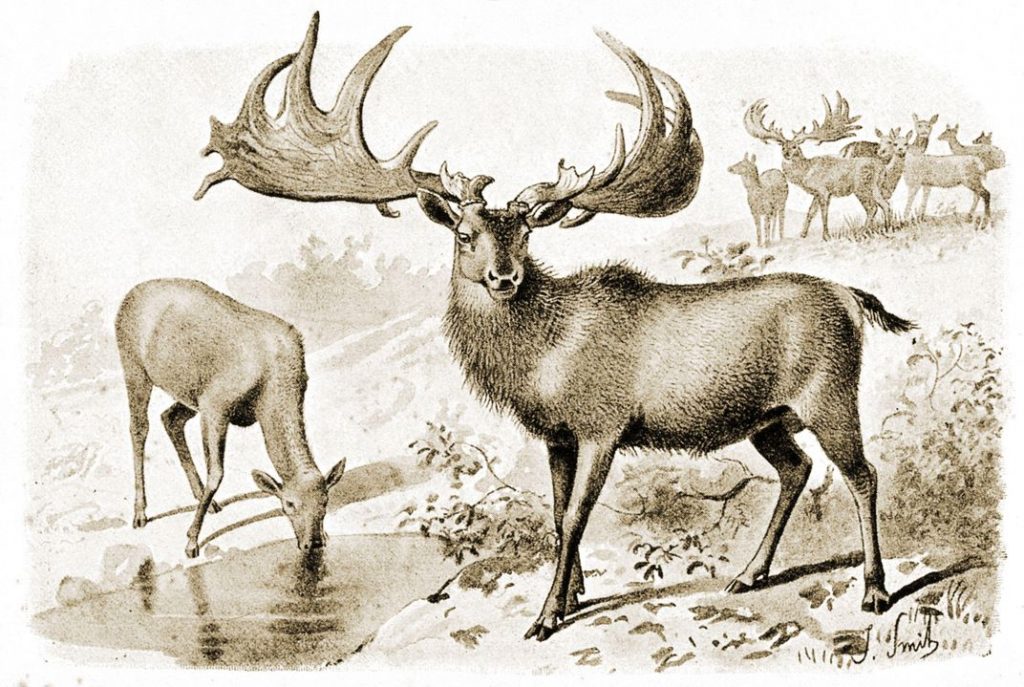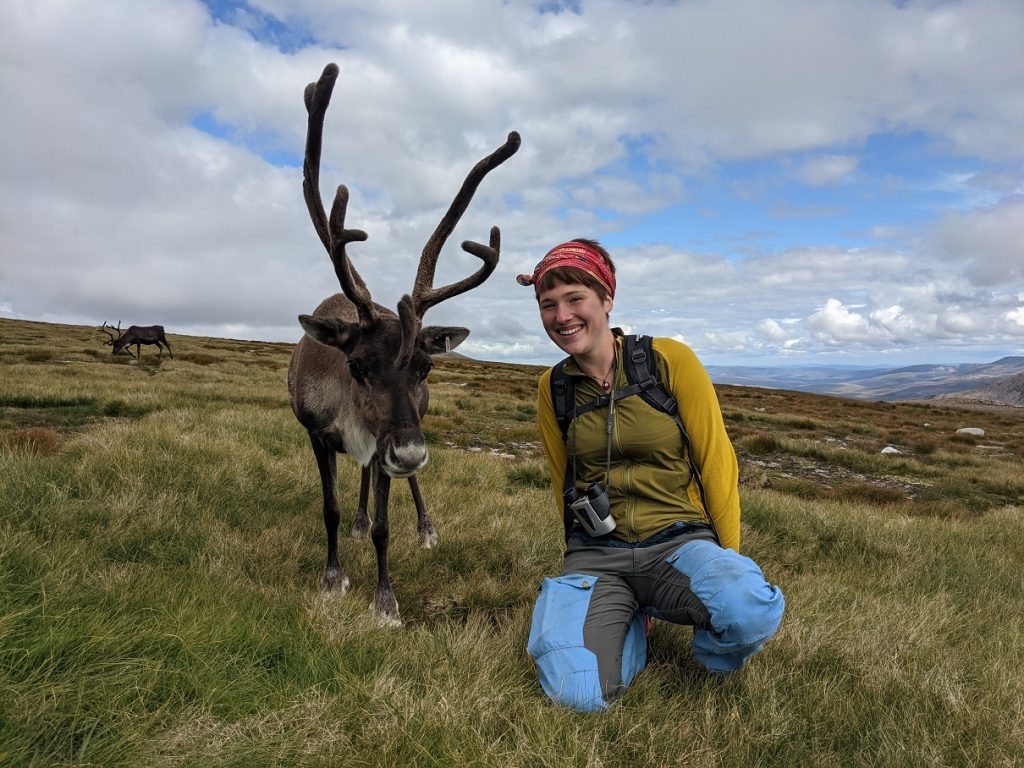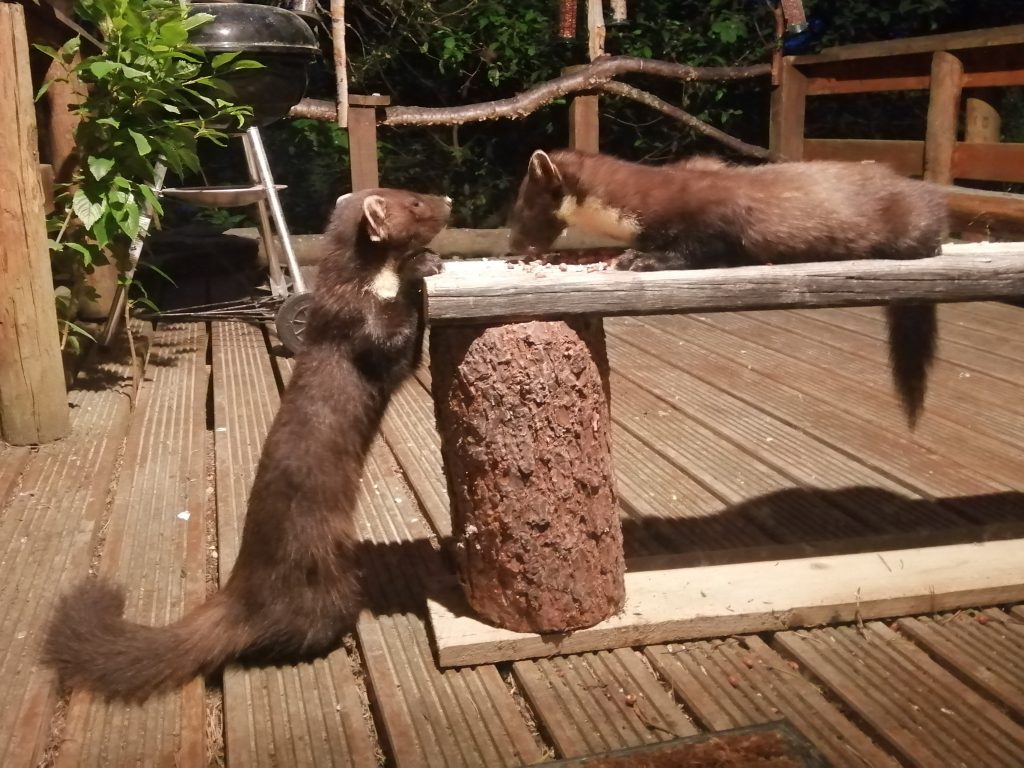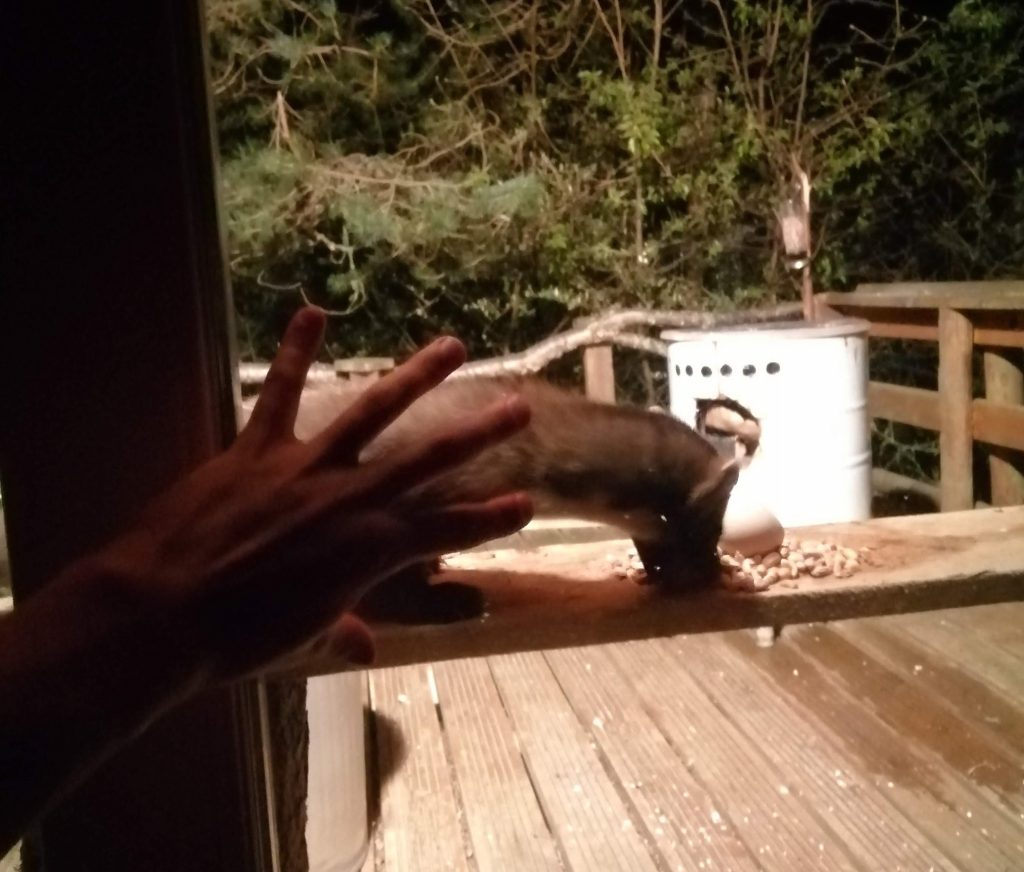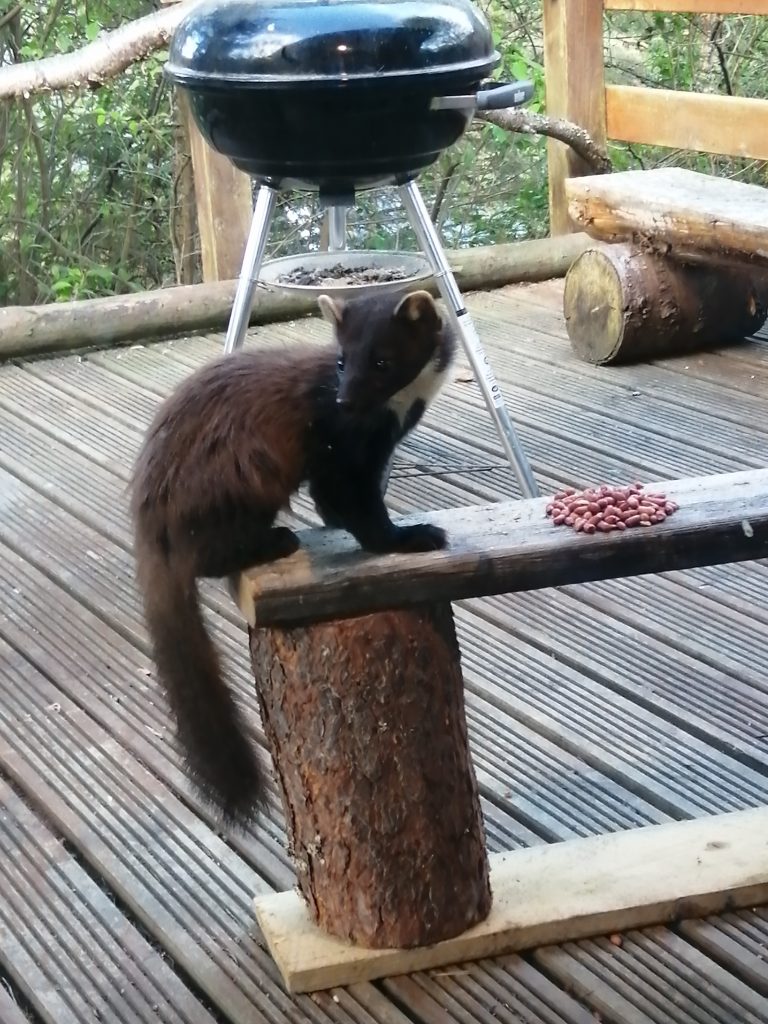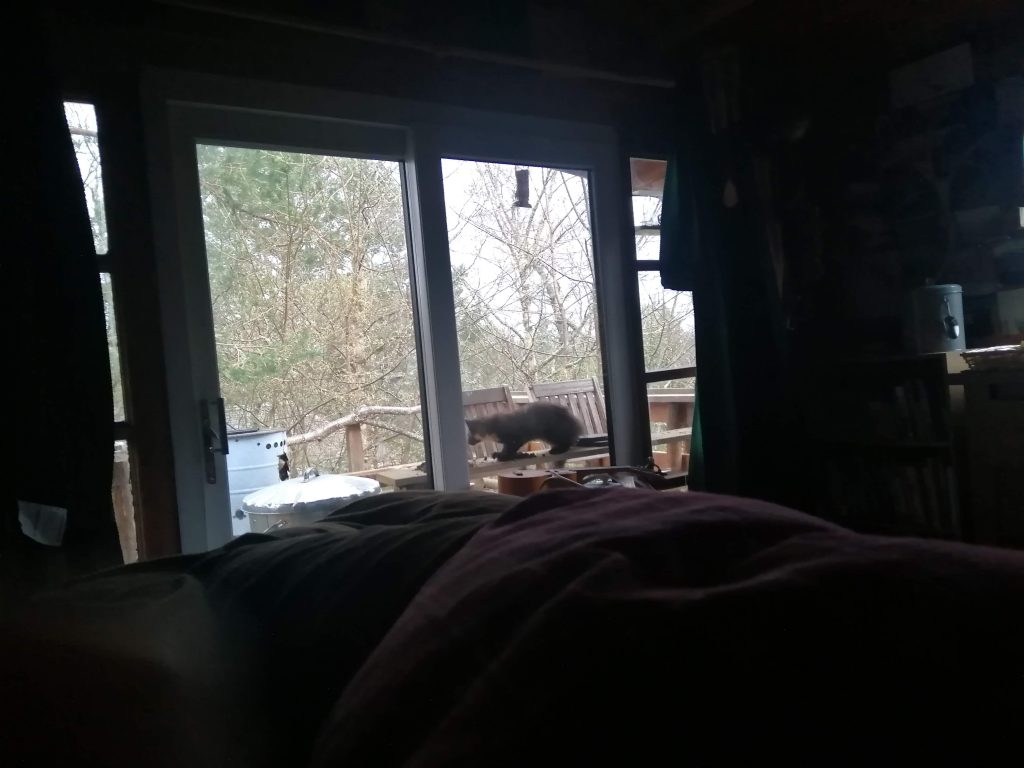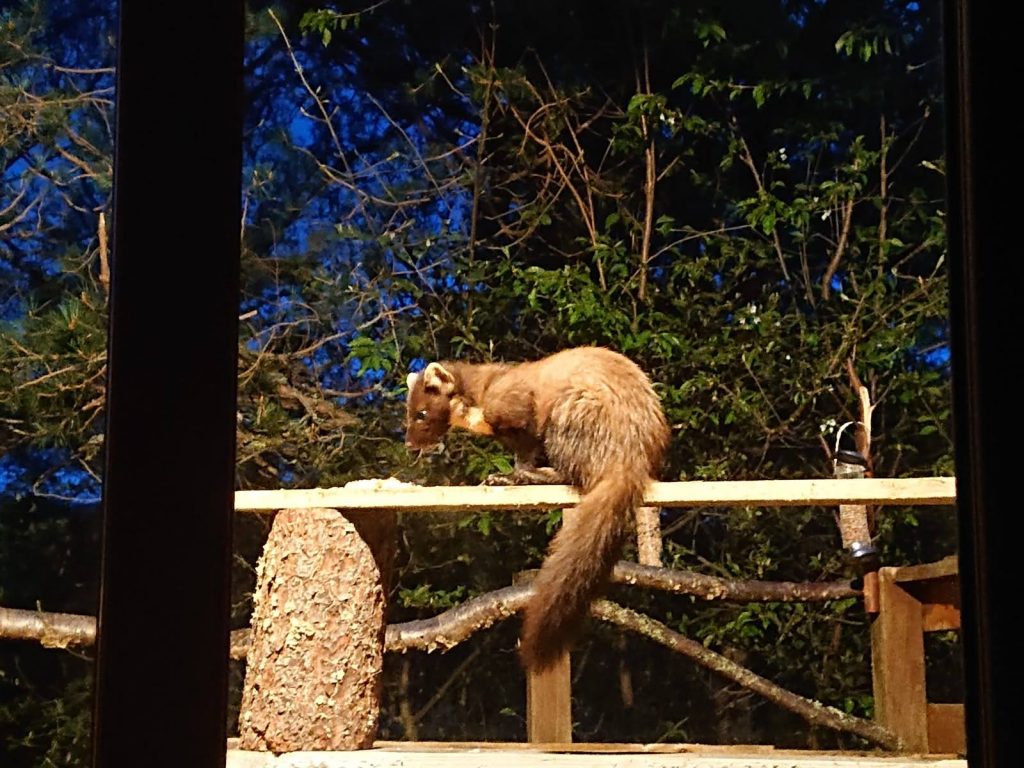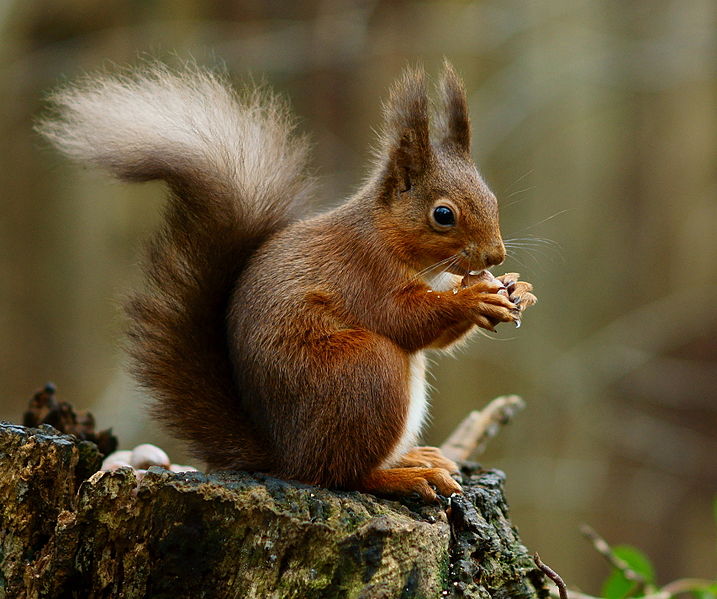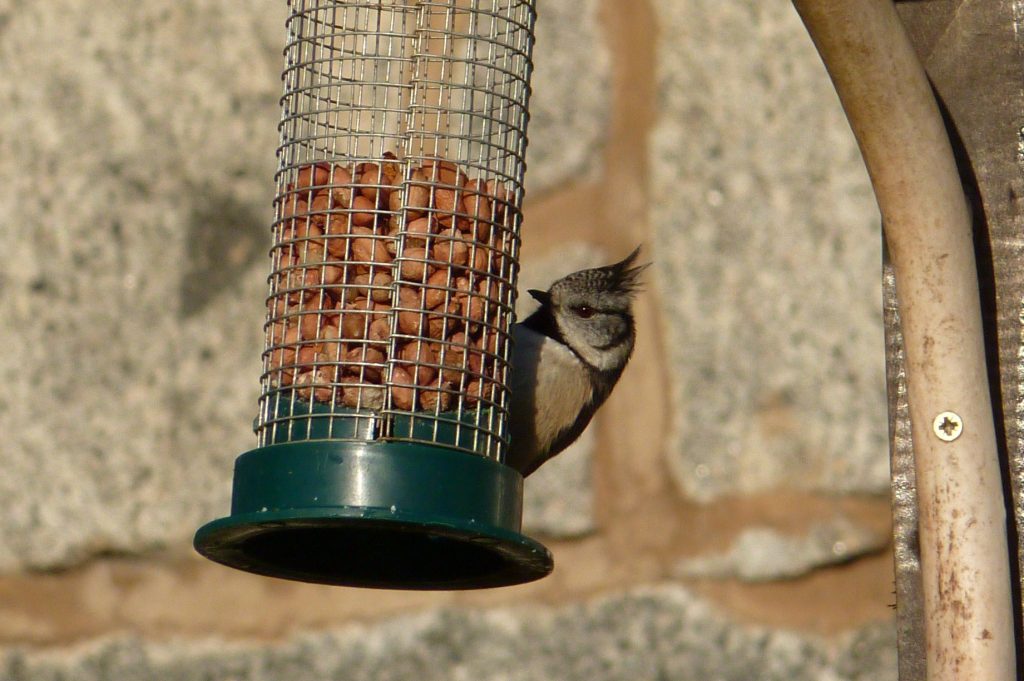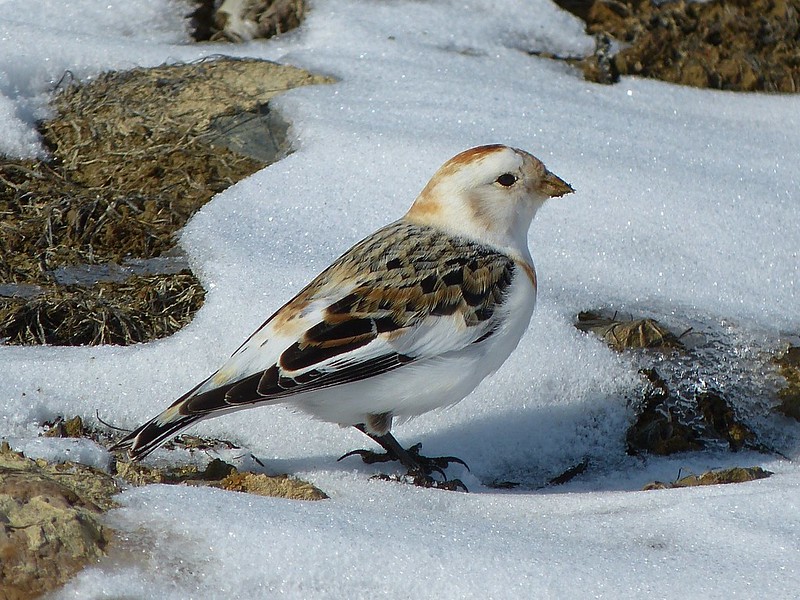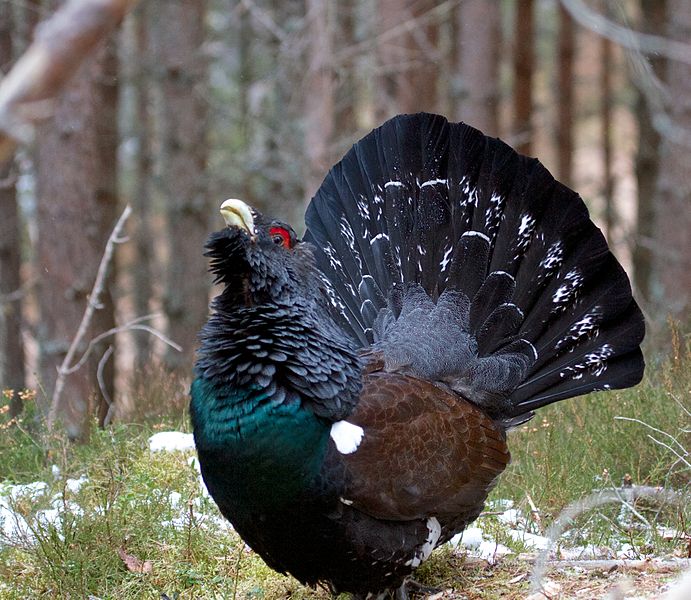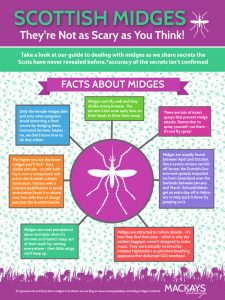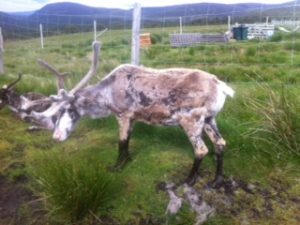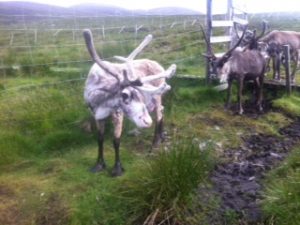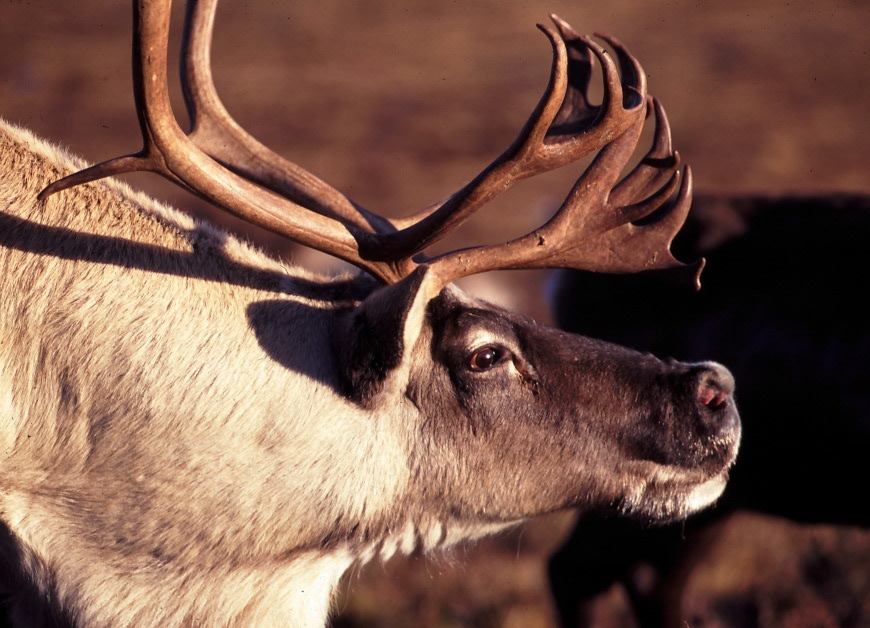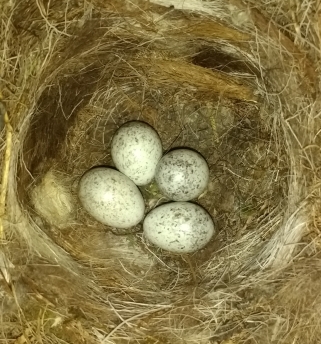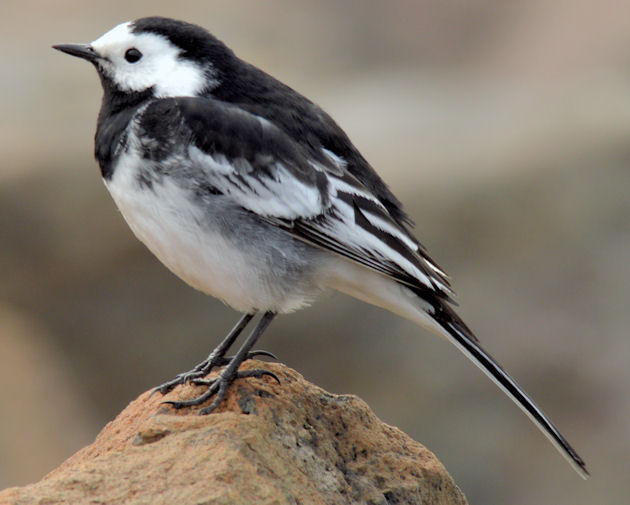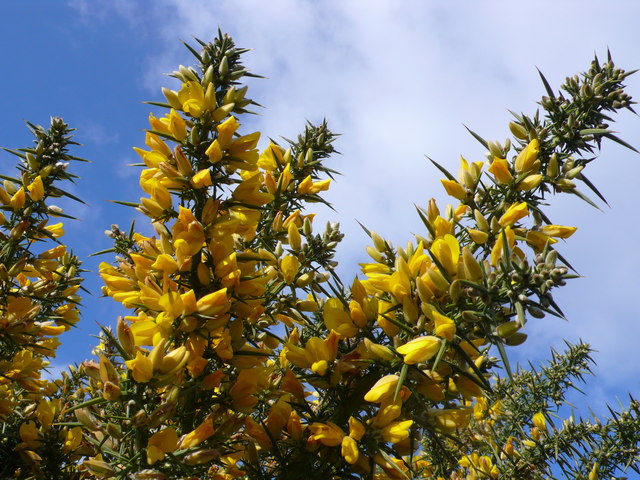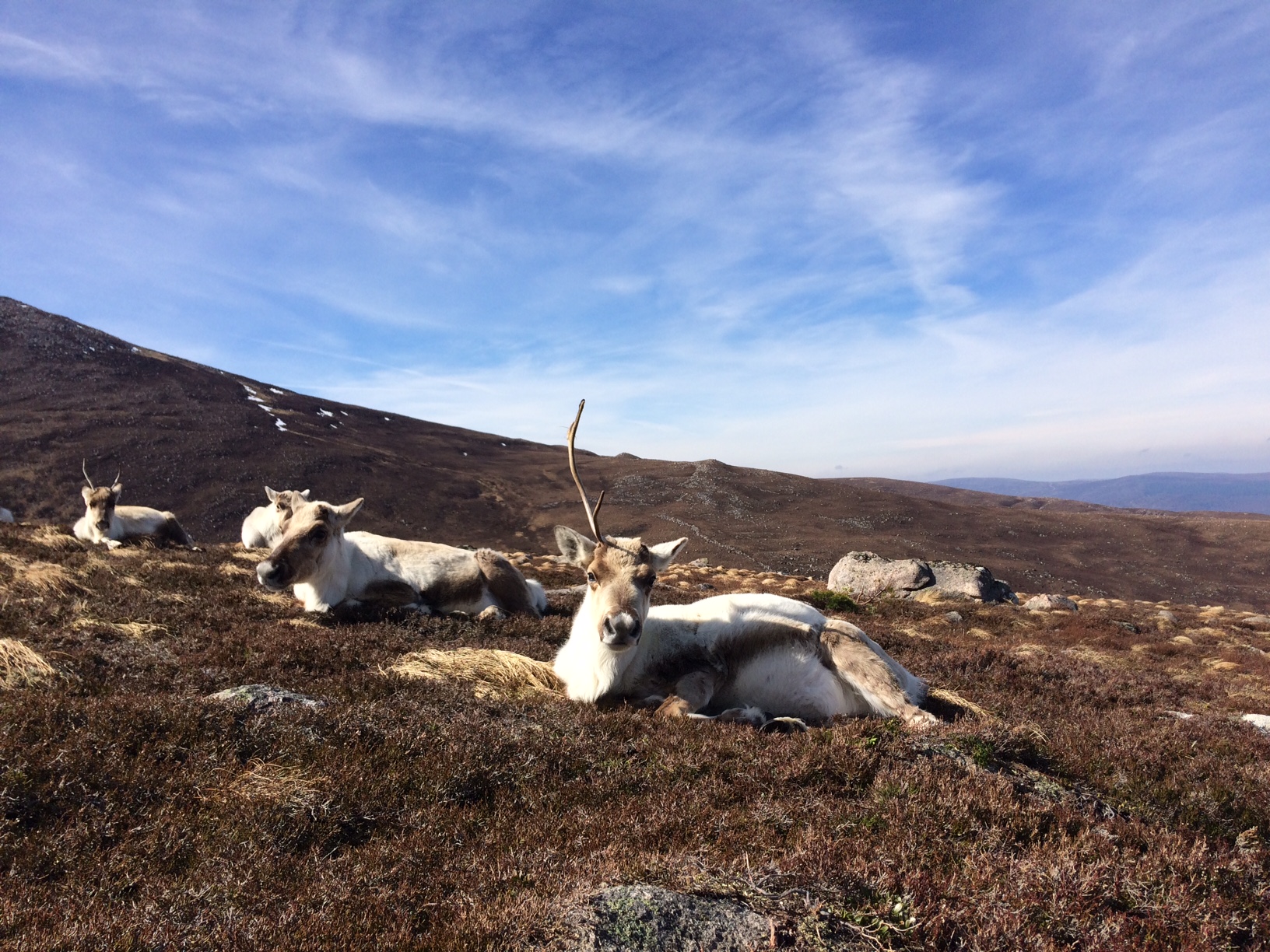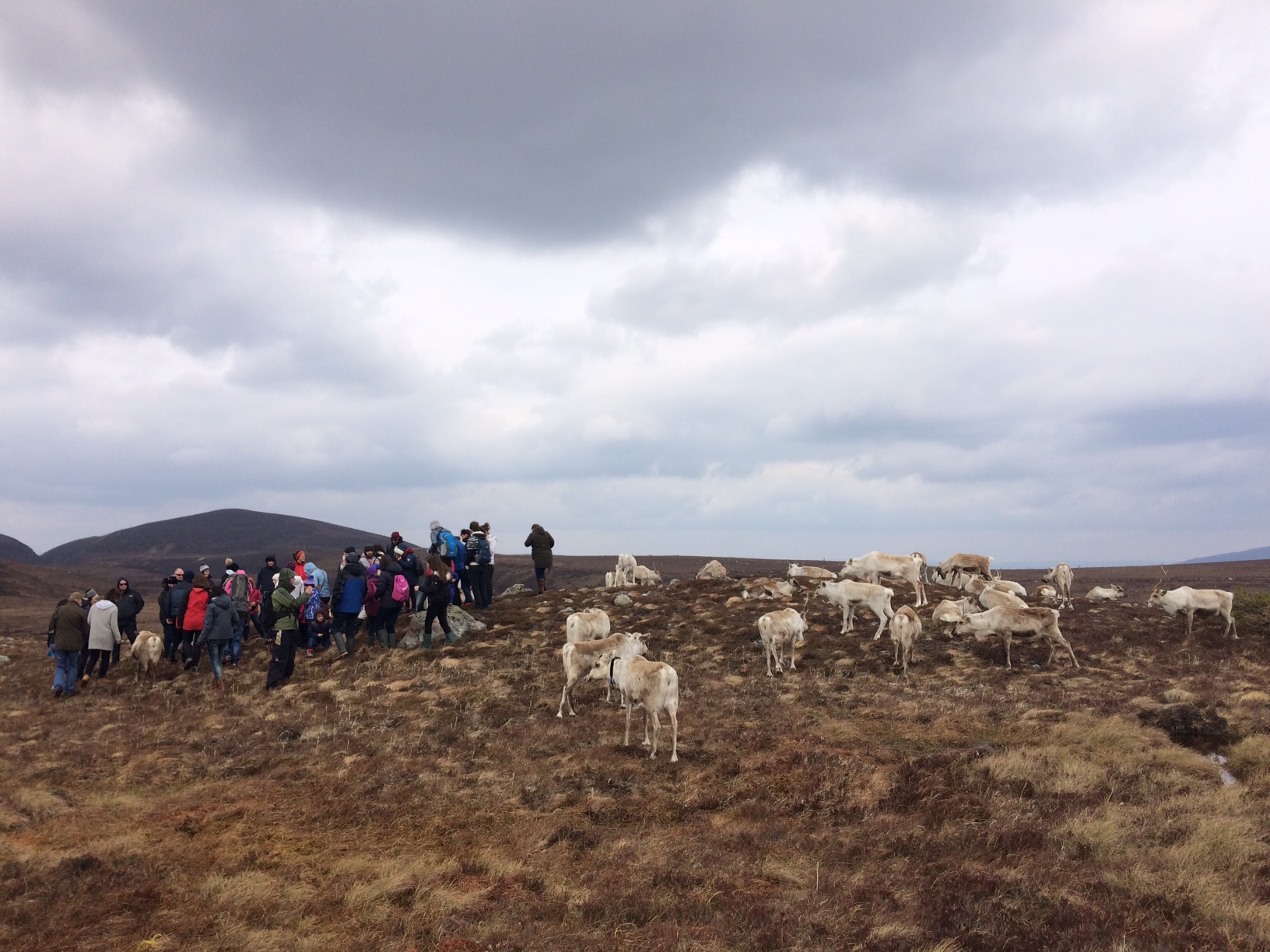Spring is all around! The days are longer and warmer, buds are beginning to burst into leaf and very soon there will be lots of wobbly new-born reindeer calves taking their first steps in our hill enclosure. As well as the reindeer which increase in number on the hill, so will the bird life as migratory birds arrive from warmer places such as Africa, Southern Europe or even coastal Britain to breed and rear young. All the herders enjoy and appreciate the different birds we get in the enclosure during different times of the year and spring announces the return of some of our favourites.
Ring Ouzel – It may be a fair assumption that this species is the favourite of migratory birds amongst herders. Known as the mountain blackbird, they are a little longer and more upright than their more common cousins and get their name because of the male’s obvious white bib under the neck. They typically nest in gullies or steep scree slopes on the hill side and like many migrants, arrive in April and leave by September. Along with a beautiful song and obvious alarm call it is always a joy to see these birds in and around the enclosure looking for invertebrates to feed on.
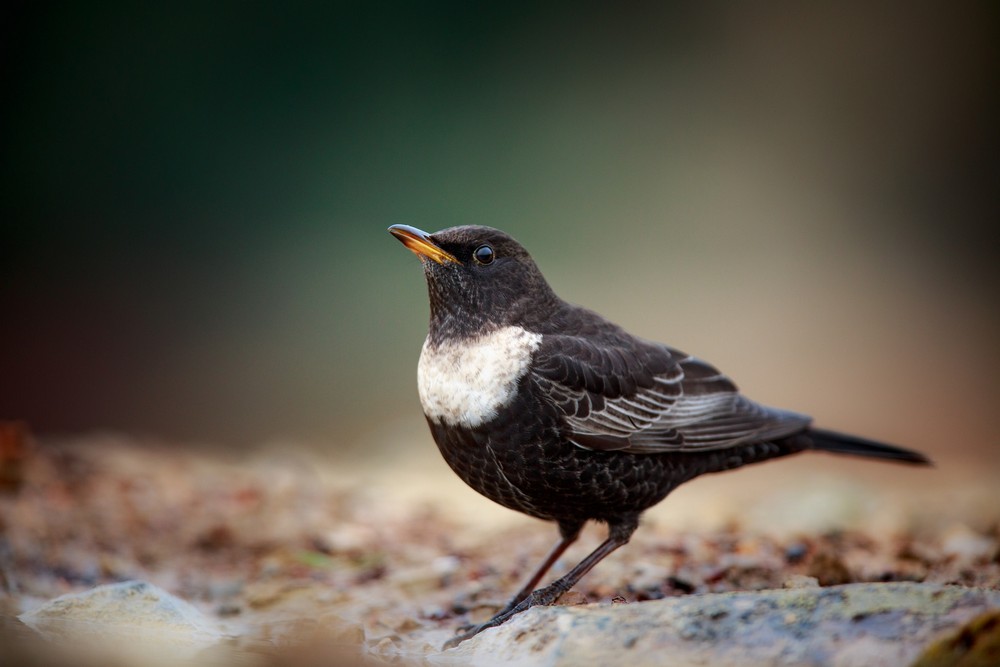
Wheatear – Also summer migrants, these little birds can be common across the more upland environment of the Cairngorms. The males are quite colourful with a blue/grey head and back, black wings and an orange like breast. Wheatears like rocky open land but can be seen on moorlands, and coastal grassland, nesting on the ground in holes, scree slopes or stone walls. They can be seen hopping about in the enclosure for insects and more so on the footpath towards the Chalamain Gap. Sometimes found in Greenland or Canada and wintering in Africa, Wheatear are among the world’s long distance migratory birds, estimated to fly nonstop for up to 2400km in 30 hours! The first one this season was seen early on the 24th of March.
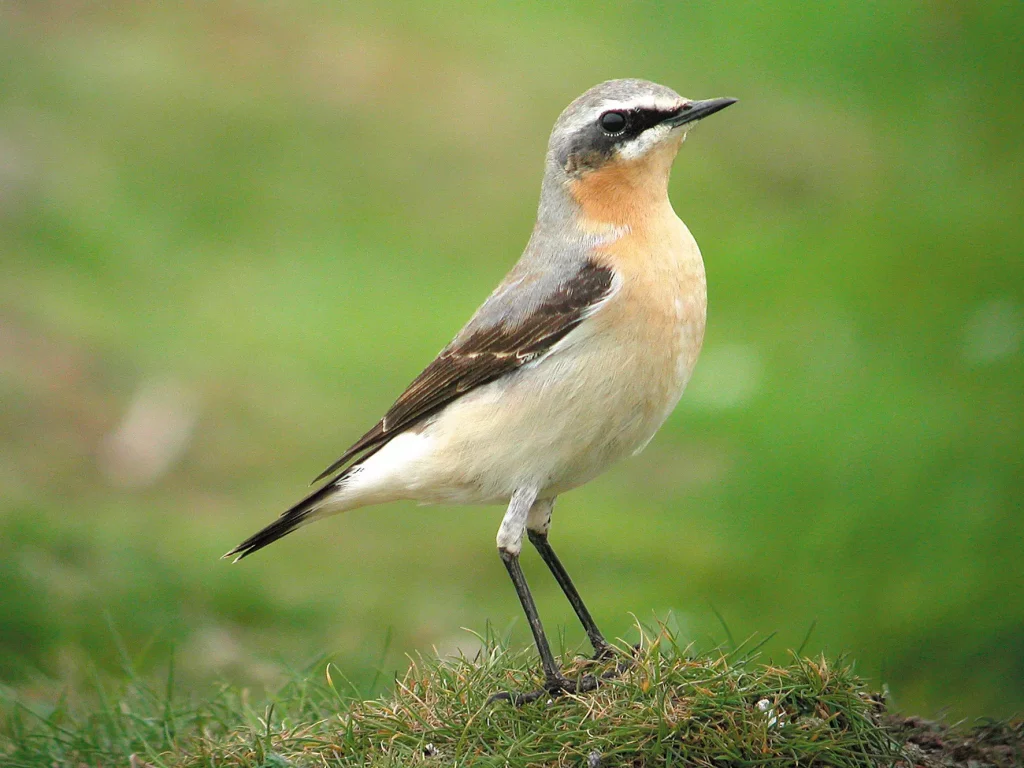
Golden Plover – During the winter Golden Plover can be found in the UK near the coast or lower farmlands and are often seen in flocks with Lapwing. For the spring and summer they move to the higher moorlands and hillsides to breed and nest on the ground, they can be be seen in our enclosure but their spotted black and golden camouflage plumage keeps them well hidden, it’s not until you hear their high pitched and rather sad sounding alarm call that you realise they are around. These shy but charming waders can also be seen up on many of the higher hills of Scotland and are a great addition to any hill day.
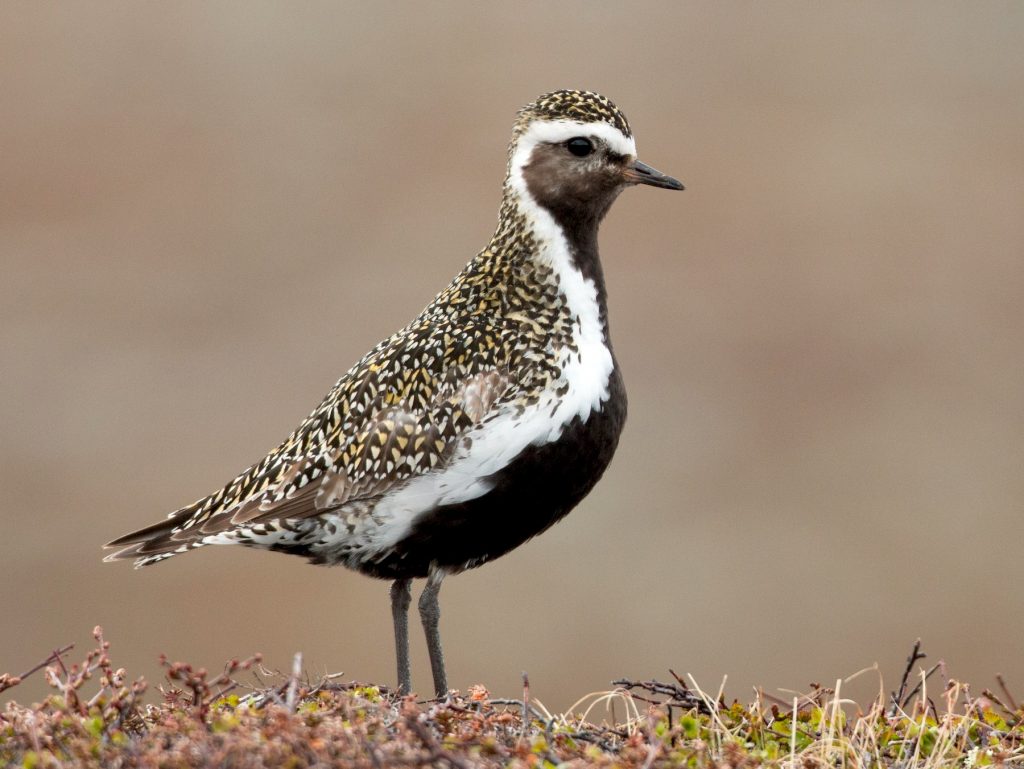
Snipe – Another wader to be found regularly in the enclosure is the Snipe. Like Golden Plover, Snipe are in the UK all year round but many of the wintering birds migrate elsewhere to breed, leaving a much smaller population of residents during the spring and summer. They typically enjoy a damp environment in habitat such as marshes, bogs or wet meadows, all of which is abundant in the reindeer enclosure. Snipe have a long straight bill, short legs and rather dumpy shape. You’re more likely to hear their amazing drumming call during the spring season than ever see them, the only time I ever see Snipe is by accidently getting too close and watch as they fire off the ground and whizz away in a fast zig- zagging motion.
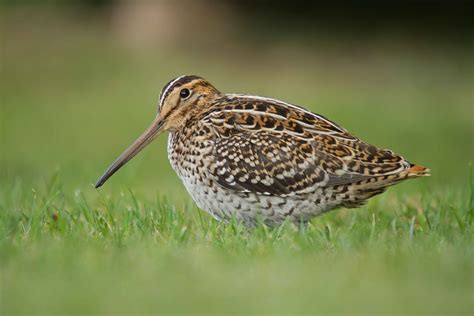
Skylark – Another British resident that also moves up onto the mountain side during the breeding season is the Skylark. With a very good population throughout the whole of the UK, these birds are by no means uncommon but it’s always a delight to hear their long and beautiful song high in the sky during the Spring and Summer months. Skylark’s are a rather bland looking bird with a grey and brown speckled plumage that looks very similar to that of a meadow pipit. Get close enough though and you’ll also notice a crested head that helps differentiate them. It’s the sound of a Skylark that makes them unmistakable though, flying well over 100 meters high in the sky and singing for up to 15 minutes long, they make a great additional to a hill trip in the enclosure with the reindeer.
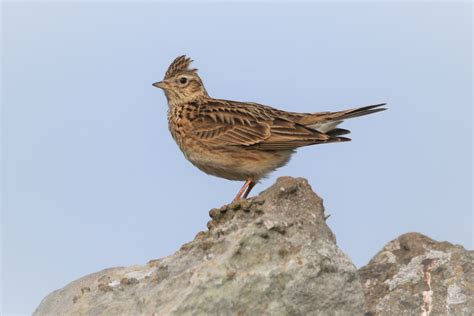
Black Grouse – The final bird to mention is the Black Grouse. Black Grouse are a rather large bird, the females are a grey/ brown colour while the males are predominantly black with red eyebrows and white under tail and wings feathers. They live in Glenmore and the Cairngorms throughout the year in secret until the Spring and breeding season when the male birds start to Lek. The Lek is a site usually in a clearing close to woodland where the males compete for the most central positions within it. Flashing their tail feathers, the males can be highly active with plenty of showboating while making bubbling and shrieking calls and sometimes fighting to gain position, the Grouse most central in the Lek will attract the most females who watch the drama from a short distance. We are lucky to have a Lek within the enclosure where the birds are undisturbed within the safety of our private space.
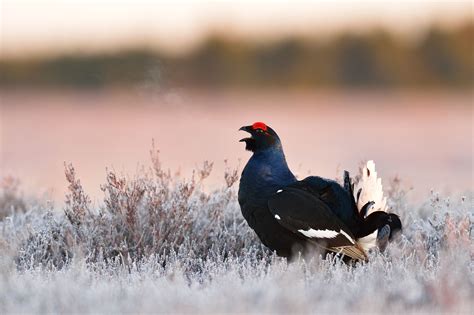
Joe

